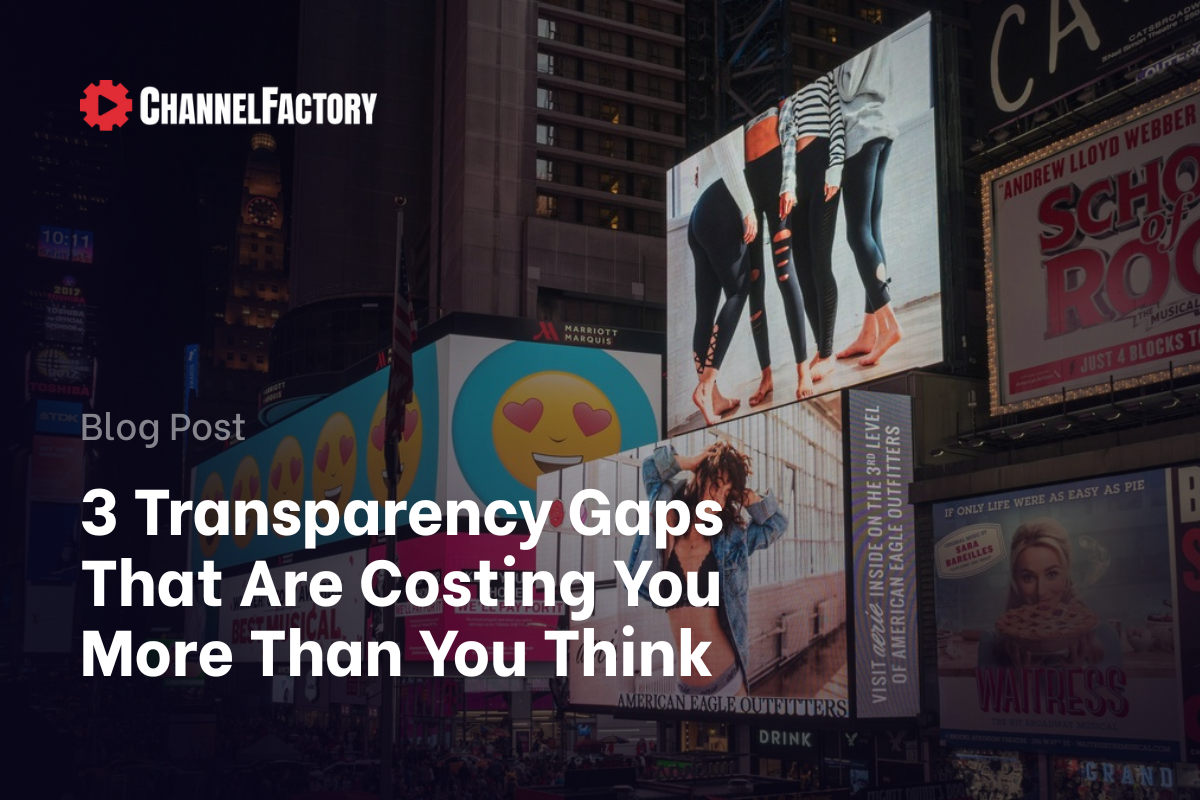August 8, 2025

The digital media ecosystem is facing a reckoning. For years, ad dollars have flowed through murky supply chains with little clarity, resulting in wasted spend, misaligned placements, and brand equity at risk. Marketers are now demanding transparency as it is a performance imperative. As scrutiny intensifies, a new baseline is being drawn. Not just for media efficiency, but for media integrity.
The industry doesn't need more disruption. It needs reconstruction. A reset.
Only 36% of marketers believe they currently have full visibility into their supply chain. (Source: WARC, 2025)
70% of ad campaigns generate less than £2 for every £1 spent. (Source: WARC, 2025)
More than 56% of ad impressions are never seen by consumers, and an estimated 60% of digital marketing spend is wasted. (Source: Hubspot)
$13 billion – the estimated annual wastage in global digital ad spend due to non-transparent practices. (ANA, 2024)
For too long, digital media has operated on the illusion of efficiency. Programmatic promised faster, smarter, and cheaper advertising. In many ways, it delivered. But in the process, something critical was lost: trust.

Today, marketers are told they’re buying precision but often receive opacity instead. Budgets flow through tangled supply chains. Ads appear alongside content that contradicts brand values. Performance is measured through proxy metrics that don’t reflect real business outcomes.
It’s no surprise that transparency has re-emerged as a priority. But the version of transparency needed in 2025 isn’t just about revealing what’s behind the curtain. It’s about rethinking the entire stage.
The old model was passive. Brands would ask vendors for proof of value, and vendors would respond with logs, reports, or selective data. That’s no longer sufficient. In today’s fragmented, AI-driven ecosystem, transparency must be proactive, continuous, and built into the system.
What does that look like?
This isn’t just an operational change; it’s a mindset shift. Buyers need to move beyond chasing the cheapest CPM and start demanding value that aligns with long-term business and brand impact.
Transparency isn’t just a technical fix. It’s a strategic imperative. The brands that will lead this next era are those that see media not just as a line item, but as a reflection of what they stand for.

This is even more urgent in the age of AI. Automation makes decisions at speed and scale but those decisions are only as good as the inputs behind them. When algorithms are trained on flawed data or incentivized by the wrong goals, trust suffers.
We don’t just need smarter systems. We need more responsible ones. That includes interrogating how AI models prioritize content, what assumptions they carry, and whether those align with the values brands are trying to uphold.
If transparency is going to mean anything, it has to be more than a compliance check. It must be embedded into the very architecture of how media is planned, executed, and measured – from audience targeting to content alignment and campaign reporting.
This moment calls for a new kind of industry standard. One that doesn’t simply avoid risk but actively seeks out suitability. One that prioritizes inclusion, context, and control. Transparency should not be retrofitted into the system. It should be foundational.
Some companies have long championed this approach, building tools and practices that emphasize clarity, accountability, and control. These aren’t niche efforts anymore. They offer a viable blueprint for the future of digital media where ethical alignment and performance go hand in hand.

Transparency starts with knowing where your ads run and why it matters. The Ultimate Brand Suitability Guide unpacks the difference between brand safety and true suitability, and offers a practical framework for ensuring your media shows up in the right context, every time. Download the guide to get started.